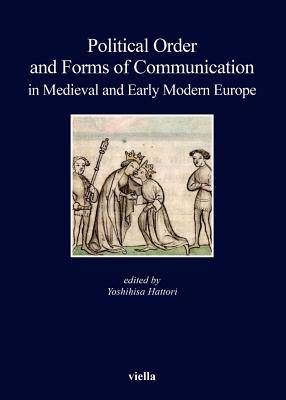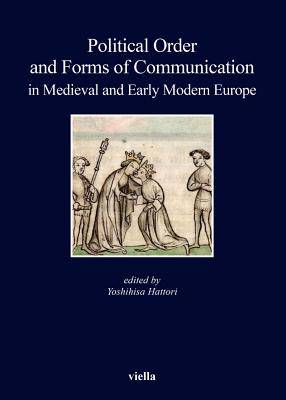
Door een staking bij bpost kan je online bestelling op dit moment iets langer onderweg zijn dan voorzien. Dringend iets nodig? Onze winkels ontvangen jou met open armen!
- Afhalen na 1 uur in een winkel met voorraad
- Gratis thuislevering in België vanaf € 30
- Ruim aanbod met 7 miljoen producten
Door een staking bij bpost kan je online bestelling op dit moment iets langer onderweg zijn dan voorzien. Dringend iets nodig? Onze winkels ontvangen jou met open armen!
- Afhalen na 1 uur in een winkel met voorraad
- Gratis thuislevering in België vanaf € 30
- Ruim aanbod met 7 miljoen producten
Zoeken
Political Order and Forms of Communication in Medieval and Early Modern Europe
Gerd Althoff, Hideki Aotani, Giorgio Chittolini, Andrea Gamberini, Yoshihisa Hattori, Taku Minagawa, Atsuko Nakamura, Barbara Stollberg-Rilinger, Keiko Takada, Kotaro Todoroki, Nobutada Zushi
€ 61,45
+ 122 punten
Omschrijving
'Communication' has become one of the most vibrant areas of current research on medieval and early modern Europe, almost paralleling the heightened popularity of conflict study since the 1980s. However, the nature of this concept seems to be ambiguous and has been defined with multiple nuances. Needless to say, communication in the Middle Ages was usually accomplished by personal presence, contact, and interaction, including conflict and its settlement. In this sense, the process of communication often comprised symbolic and ritual action. In response to concerns about the study of political communication, it should be emphasised that communication may confirm and spread certain fundamental ideas, social values and norms, bringing about certain patterns of behaviour and mentality that can be shared by members of the political body and community. The authors of these essays discuss the characteristics of political communication in medieval and early modern Europe by highlighting two aspects: 'ritual and symbolic communication', and 'conflict, feuds and communication'.
Specificaties
Betrokkenen
- Auteur(s):
- Uitgeverij:
Inhoud
- Aantal bladzijden:
- 252
- Taal:
- Engels
- Reeks:
- Reeksnummer:
- nr. 171
Eigenschappen
- Productcode (EAN):
- 9788867282661
- Verschijningsdatum:
- 15/02/2014
- Uitvoering:
- Paperback
- Formaat:
- Trade paperback (VS)
- Gewicht:
- 399 g

Alleen bij Standaard Boekhandel
+ 122 punten op je klantenkaart van Standaard Boekhandel
Beoordelingen
We publiceren alleen reviews die voldoen aan de voorwaarden voor reviews. Bekijk onze voorwaarden voor reviews.











